We all know the importance of cross training for runners.
Wall Pilates is a great form of cross training for runners to do on active recovery days to build strength, promote flexibility and improve mobility.
Running and running alone will only get you so far.
You need to be dabbling in ancillary work like cross training and strength training in order to become a stronger and faster runner.
But what exactly is wall Pilates?
What are the benefits of wall Pilates? How do you best incorporate wall Pilates into your running routine?
In this guide we’ll look at:
- What is wall Pilates?
- What are the principles of wall Pilates?
- What are the benefits of wall Pilates?
- How often should you do wall Pilates as a runner?
- What are the risks of wall Pilates?
- What are the best wall Pilates exercises for runners?
- 7 wall Pilates exercises for runners
Ready?
Let’s go!
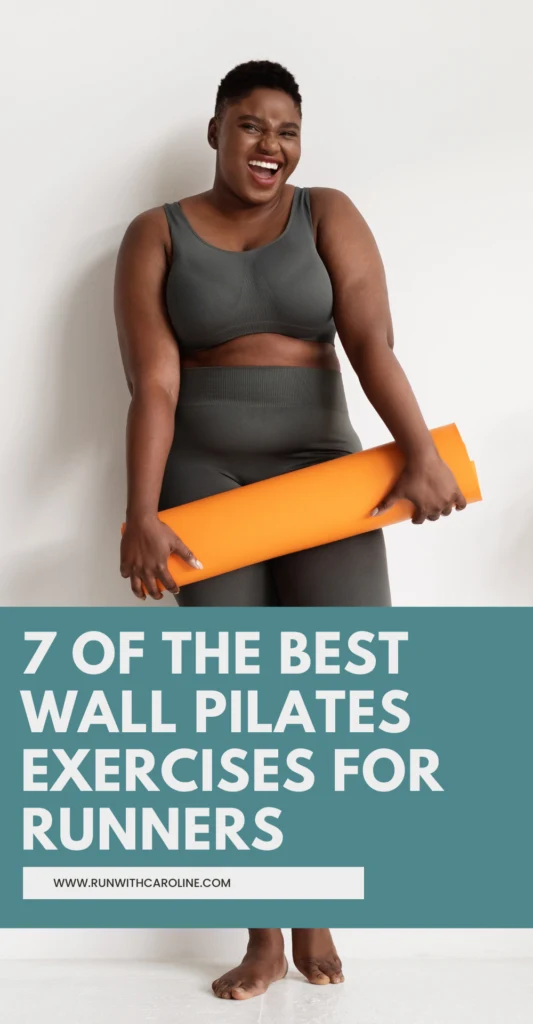
What is wall Pilates?
Wall Pilates is a variation of mat Pilates.
It involves pressing your feet or other parts of your body against a wall for stability and extra resistance while you complete a range of Pilates exercises.
As such, it is a great way to add variety into your workout routine!
Like Pilates, wall Pilates is considered a low impact workout for your body and mind.
It uses precise and controlled movements to build strength, improve flexibility and promote greater body awareness.
Read on to find out more about the principles of wall Pilates as well as benefits.
Related: 8 beginner Pilates exercises for runners
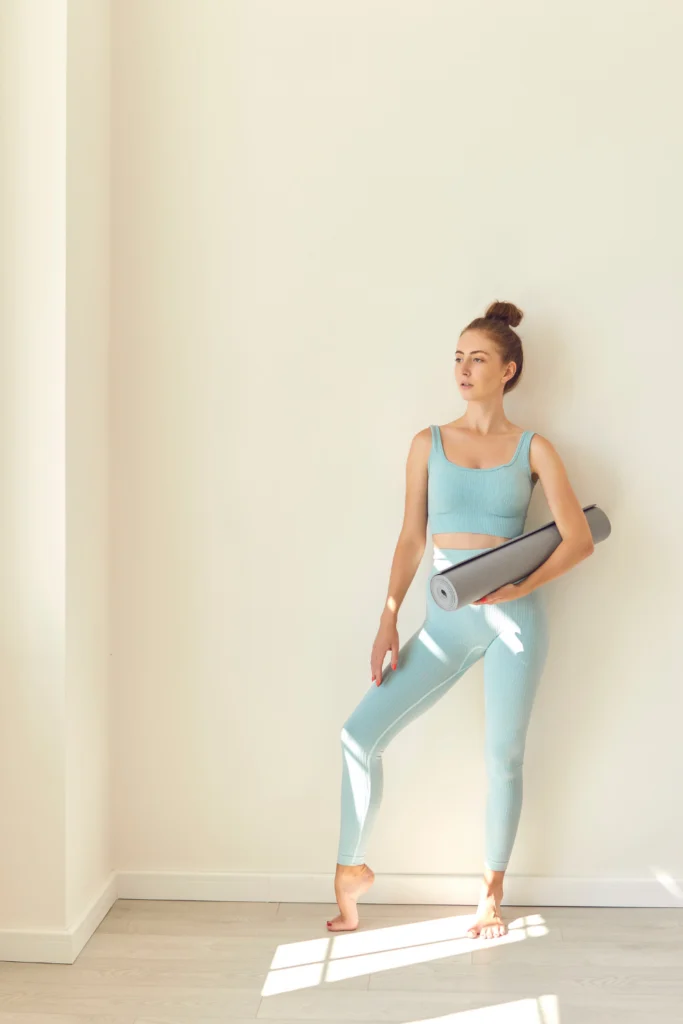
What are the principles of wall Pilates?
Wall Pilates uses the same six key principles as Pilates which are as follows:
- Concentration
- Control
- Centre
- Flow
- Precision
- Breathing
#1 Concentration
Pilates is all about concentrating on each exercise in order to perform it in an optimal way and get the most value from it.
This way you give it your full attention and promote greater body awareness.
#2 Control
Each Pilates exercise is performed in a controlled, deliberate and conscious way.
In other words, no body part is left to its own devices!
It is thought when you move with intention, you get greater value from the exercise.
#3 Centre
There is a lot of focus and attention on the centre of the body in Pilates, that is the area between your lower ribs and pubic bone.
Your core and pelvic floor muscles are integral to all Pilates movements.
By bringing the focus to the centre of your body, you are much more able to activate, engage and relax your core and pelvic floor muscles.
#4 Flow
If you watch a Pilates workout, you’ll notice that all movements are performed in a flow-like manner.
The idea is that the exercise connects all body parts, starting with your core, and then flows through the body.
#5 Precision
As I explained earlier, Pilates promotes greater body awareness throughout each movement.
Each exercise should be performed in a deliberate way that ensures appropriate placement and alignment with other parts of the body.
As such, it’s essential to focus on perfecting your form and technique in order to break any poor habits and patterns from past exercise.
#6 Breathing
Breathing is an integral part of most Pilates exercises.
During each exercise, you coordinate your movement with your breath.
Before beginning a Pilates workout, it’s recommended you learn how to breathe properly to get the most out of the workout.
Related: Is yoga good for runners? 6 benefits of yoga for runners
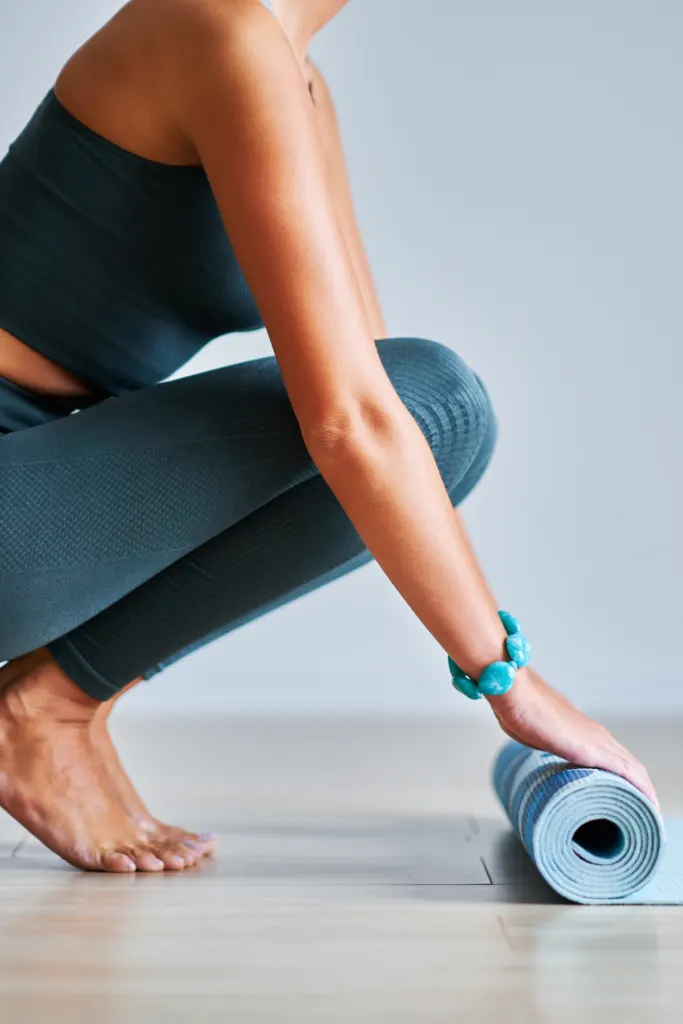
What are the benefits of wall Pilates?
There are many benefits of wall Pilates.
Like Pilates, wall Pilates can easily be done anywhere – at home, at the gym or anywhere else where you can find a wall.
You also don’t need a huge amount of equipment and gear to get started.
The two biggest benefits of wall Pilates are that it builds strength and improves your flexibility and mobility as a runner which are key.
Both these areas are often neglected in the running community.
Here are some other benefits of wall Pilates for runners:
- Provides extra resistance.
- Improves core strength and stability.
- Supports back and postural alignment.
- Adds variety into your workout.
- Increases body awareness.
#1 Provides extra resistance
With traditional Pilates you are effectively using your body weight as resistance.
In a wall Pilates workout, the wall provides extra resistance which you can work with to build strength.
A wall Pilates workout can put extra emphasis on your core and glutes.
Using your arms in a wall workout can also help to target your arms, chest and upper body.
#2 Improves core strength and stability
Compared with mat Pilates exercises, wall Pilates exercises can enhance your core strength and stability.
By using the wall, you are engaging your abdominals, back muscles and pelvic floor muscles more effectively.
One study found that a Pilates training programme was effective in improving abdominal strength and upper spine posture, as well as stabilising core posture when shoulder flexion movements were performed.
#3 Supports back and postural alignment
If you struggle with back pain or poor posture, the good news is wall Pilates promotes proper back and postural alignment.
Regular wall Pilates exercises help to relieve tension and strain on the spine and also help to correct postural imbalances.
In fact, various studies have shown positive links between Pilates and spinal posture and flexion.
#4 Adds variety into your workout routine
One of the biggest selling points for wall Pilates is that it adds variety into your workout routine.
As a runner, it’s important that you do exercises other than running to improve athletic performance, build strength and increase flexibility.
Adding variety into your routine is also great to keep you motivated!
#5 Increases body awareness
Wall Pilates requires greater body awareness compared with mat Pilates.
When you do each exercise, your focus and attention is on maintaining contact with the wall and making sure your body is aligned.
By doing wall Pilates on a regular basis, you’ll develop a deeper understanding of your body’s movements.
Related: 9 best core exercises for runners + 4 core workouts to try
How often should you do wall Pilates as a runner?
It is recommended you do between 2 to 3 wall Pilates workouts per week as a runner.
Exactly how many workouts you do will depend on your running goals and fitness levels.
If your goal is to build strength, flexibility and mobility, then 2 to 3 workouts a week performed consistently alongside your running should suffice.
Whereas if you’d simply like to add variety into your training, then 1 to 2 workouts a week should be fine.
Related: 9 best bodyweight exercises for runners
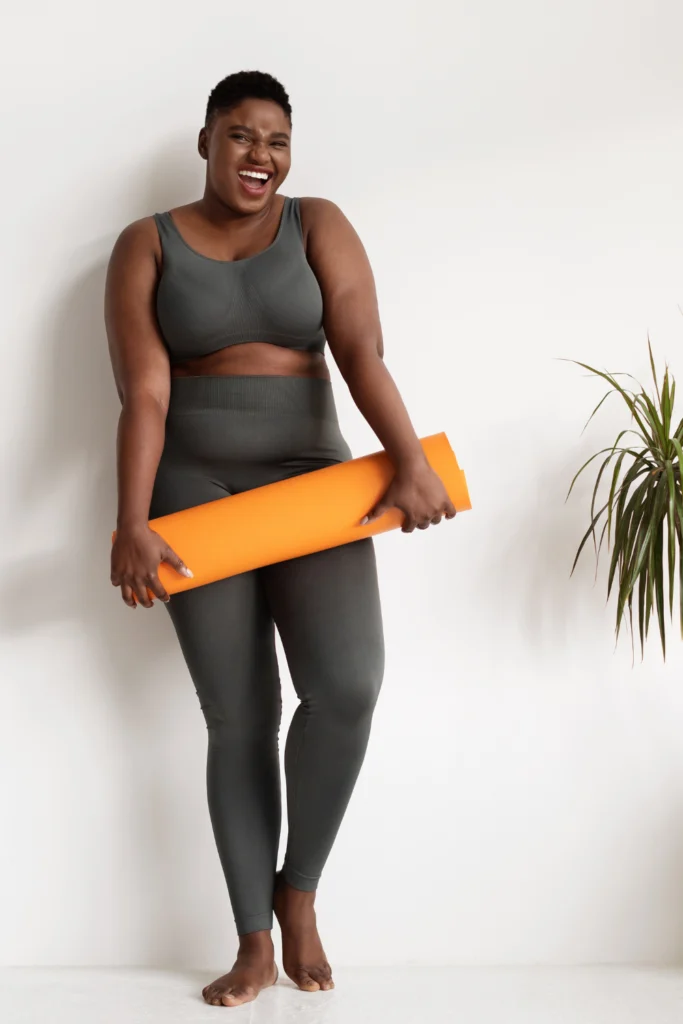
Related: Bala Bangles review: Are they worth the hype?
What are the risks of wall Pilates?
Wall Pilates is generally considered safe when performed correctly.
As with any form of exercise, it’s important you listen to your body and stop if you feel any pain or discomfort.
If you have chronic pain or any pre-existing injuries or health conditions, you may want to consult with a health professional or physical therapist before starting wall Pilates.
If it is your first time doing a wall Pilates workout, then you may feel some soreness and discomfort in the days afterwards.
Related: 7 of the best running workouts to build endurance, strength and speed
What are the best Wall Pilates exercises for runners?
The best wall Pilates exercises for runners are those that are:
- Full body exercises. These are exercises that use your whole body, including your legs, core, upper body and arms.
- Unilateral movements. These are exercises that use a single leg or single arm. Running is considered a unilateral form of movement, meaning that your legs are moving independently of one another, supporting your body.
- Core strength. These are exercises that develop your core strength and stability as a runner. Your core is important when running because it helps to keep you upright and stable for longer.
Related: The ultimate 30 day strength training plan for runners
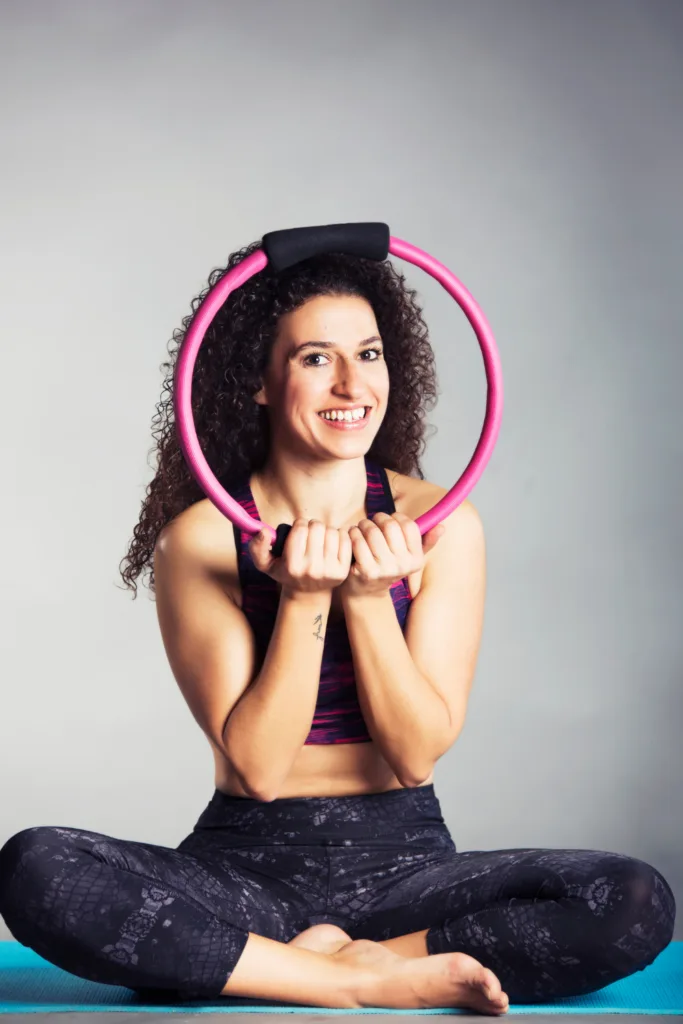
7 wall Pilates exercises for runners
Now you know more about wall Pilates, here are 7 of the best wall Pilates exercises for runners.
#1 Wall-assisted bridge (40 seconds)
- Place your feet flat on the wall so that your lower legs are parallel to the floor.
- Draw your abs towards your spine and inhale and raise your body. Squeeze your glutes together at the same time.
- When you reach the top, exhale and lower your spine gradually.
- Try one leg at a time if you want to make this movement harder.
- Repeat for 40 seconds.
#2 Wall-assisted marches (40 seconds)
- From a wall-assisted bridge, walk your feet up the wall until your knees are straight. Remember to tuck your tailbone under.
- Lift your left leg off the wall and sweep it up towards your head.
- Return your left leg to the wall, then repeat with the right leg.
- Continue to alternate for 40 seconds.
#3 Wall squat (40 seconds)
- Stand straight and upright and press back your back against the wall.
- Walk your feet out in front of you.
- Slide your back down the wall so you come into a wall squat position with your knees bent and your ankles under your knees.
- Dig your heels down and push up off the floor with your feet so that the muscles in your legs activate.
- Lift your arms out in front of you and up overhead as you push off.
- Repeat for 40 seconds.
#4 Wall squat with heel raises (40 seconds)
- From a wall squat, lift your left heel and then lower it back to the floor.
- Repeat with the right heel.
- Continue to alternate for 40 seconds.
#5 Wall lunge pulses (30 seconds per side)
- Stand upright with your back facing the wall.
- Take a big step forward with your left leg and shift your weight on your left leg.
- As you bend the left leg, lift the bent right leg up behind you toward the wall.
- Place your right foot on the wall in line with your hips. Place your hands on your hips.
- Pulse the left leg, bending a little deeper, and then returning to the starting bend.
- Repeat on the other side, 30 seconds each side.
#6 Wall push-up to plank (40 seconds)
- Stand facing the wall with your hands placed against it, slightly wider than shoulder-width apart.
- Engage your core and step back until your body forms a straight line from head to heels.
- Perform a push-up by bending your elbows and bringing your chest towards the wall.
- Push back to the starting position and hold for 2-3 seconds in the plank position.
- Repeat for 40 seconds.
#7 Standing wall roll down (40 seconds)
- Stand with your back against the wall, feet hip-width apart.
- Inhale as you lift your arms overhead.
- Exhale and slowly roll your spine down the wall, vertebra by vertebra, while keeping your core engaged.
- Inhale at the bottom, then exhale and roll back up to the starting position.
- Repeat for 40 seconds.
Related: What is proper running form? 5 key principles of proper running form and technique
- 5 things I wish I’d known before returning to running - March 3, 2024
- Running 20 minutes a day: Benefits + how to start - January 27, 2024
- How to run your first 2 hour half marathon - January 16, 2024
